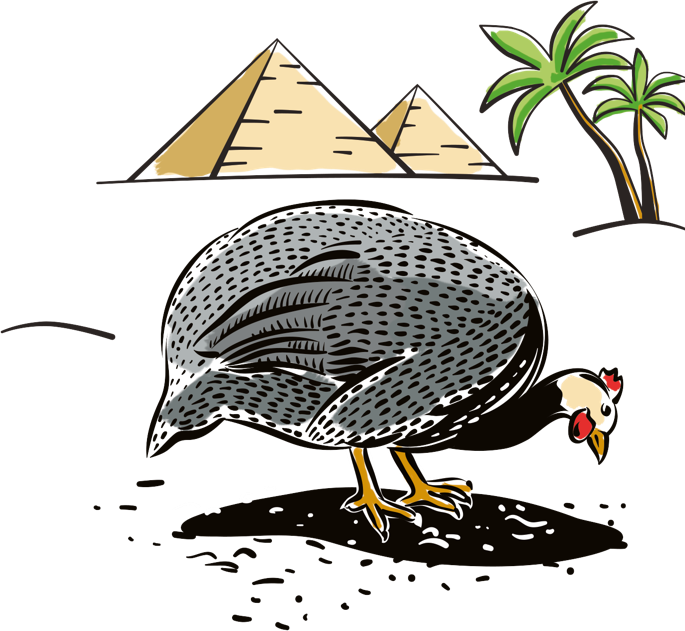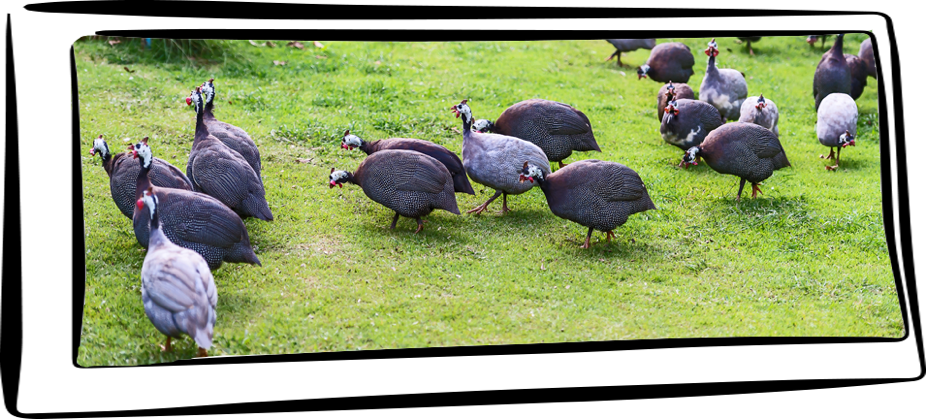
By all accounts
As far as we know, Numida meleagris - the domestic helmeted guinea fowl - is native to Africa, where there are still pockets of wild guinea fowl living on the savannah and up in the trees. They were first imported by the Greeks and Romans, who used them as offerings to the gods and reared them like poultry. There are many myths and legends surrounding the guinea fowl, starting with the name. So... why are they called guinea fowl?
From Pharaoh's chicken to pintades and guinea fowl
The guinea fowl, or pintades as it’s sometimes called, was known as the ‘Numidian chicken’ to the Romans. It was the ‘Turkish chicken’ at the time the Byzantine Empire fell, and ‘Pharaoh's chicken’ or ‘Indian chicken’ by the 15th century. A hundred years later it arrived in Spain, where it became the pintado - meaning 'well-pigmented' - with reference to its pointed crest and colourful wattle. The domestic guinea fowl originated from one of several wild species on what was once called the Guinea Coast in West Africa, hence the name.






